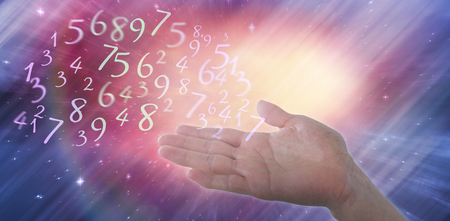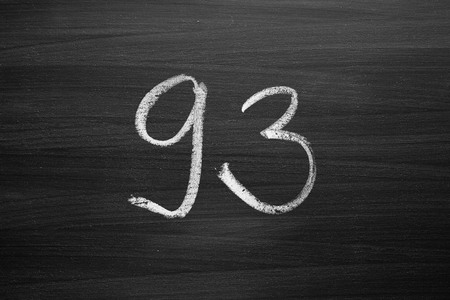Introduction: Tarot’s Resurgence in American Culture
In recent years, Tarot has experienced a striking revival across the United States, moving far beyond its reputation as a mysterious tool reserved for fortune-telling or parlor games. This contemporary resurgence is deeply rooted in America’s evolving spiritual landscape, where traditional religious frameworks are increasingly giving way to individualized and eclectic approaches to meaning-making. As Americans embrace holistic wellness, mindfulness, and personal growth, Tarot cards have found a new place at the intersection of meditation, ritual, and self-exploration. Tracing its origins from European mysticism to its arrival on American shores in the late 19th and early 20th centuries, Tarot has long occupied a liminal space—part entertainment, part esoteric practice. However, today’s practitioners are integrating Tarot into daily routines that blend psychological insight with spiritual inquiry. This introduction sets the stage for exploring how Tarot’s historical journey now converges with modern American trends in spirituality, self-care, and community ritual, reflecting broader shifts in the nation’s collective search for purpose and connection.
2. Tarot and Meditation: Tools for Mindfulness
Within contemporary American spiritual practices, Tarot cards have found a unique place as powerful tools for meditation and mindfulness. In many spiritual circles across the United States, Tarot is no longer seen solely as a method of divination but as an aid for self-reflection and personal growth. The integration of Tarot into meditation routines reflects a broader shift toward holistic well-being and conscious living.
The Role of Tarot in Meditation
Tarot cards are increasingly used during meditation sessions to help individuals focus their thoughts, set intentions, and explore their inner landscapes. Many Americans incorporate Tarot pulls at the beginning or end of their meditation practices. The visual symbolism of each card serves as a prompt for contemplation, often revealing subconscious patterns or emotions that may need attention.
Common Approaches in American Spiritual Circles
| Meditation Approach | Description | Purpose |
|---|---|---|
| Single Card Focus | Pulling one card before meditation and reflecting on its imagery and meaning throughout the session. | Enhance self-awareness and guide introspection. |
| Themed Spreads | Selecting cards based on specific themes (e.g., gratitude, release, intention-setting) to guide group or solo meditations. | Direct focus to particular areas of personal development. |
| Guided Visualizations | Using Tarot imagery as the basis for guided meditations or visual journeys. | Deepen connection with archetypes and facilitate emotional healing. |
| Journaling Integration | Meditating on a card, then journaling insights and feelings that arise. | Encourage ongoing reflection and track personal growth over time. |
Cultural Adaptation in the United States
The American approach to combining Tarot with mindfulness practices is marked by openness, inclusivity, and an emphasis on individuality. While some practitioners draw from traditional esoteric interpretations, many adapt the practice to align with modern psychological frameworks or personal belief systems. This flexibility allows people from diverse backgrounds—whether secular, religious, or “spiritual but not religious”—to find meaningful ways to engage with Tarot in their daily lives. Ultimately, integrating Tarot into meditation fosters a sense of empowerment and presence, enabling practitioners to navigate life’s complexities with greater clarity and intention.

3. Tarot in Modern Rituals and Self-Care
Within the landscape of contemporary American spirituality, tarot has moved beyond fortune-telling stereotypes to become a valued tool for daily rituals and holistic self-care. For many, starting the day with a single-card pull or integrating tarot into morning routines serves as both a mindfulness anchor and a method of intention-setting. This simple practice helps individuals check in with their emotional state, clarify goals, and cultivate self-awareness, echoing broader trends in wellness culture that prioritize intentional living and present-moment focus.
As tarot decks find their way onto nightstands and coffee tables across the U.S., Americans are increasingly using cards as part of personal rituals—either solo or within trusted circles. These rituals might include lighting candles, journaling reflections after a reading, or pairing card pulls with meditation or breathwork. Such combinations blend ancient symbolism with modern psychological insight, providing a structured yet flexible framework for self-inquiry and growth.
The popularity of “card pulls”—drawing one or more cards for guidance on specific questions or as a general check-in—has exploded on social media platforms like TikTok and Instagram, where creators share spreads, interpretations, and tips for integrating tarot into everyday life. This digital visibility has helped demystify tarot, encouraging more people to view it as an accessible self-care practice rather than an esoteric art reserved for specialists.
Ultimately, tarot’s role in daily rituals speaks to a uniquely American approach: blending diverse spiritual traditions, embracing personal agency, and adapting old practices for new contexts. Whether used for stress relief, creative inspiration, or simply as a grounding ritual before bed, tarot offers a meaningful way to pause, reflect, and reconnect in an often hectic world.
4. Eclecticism: Tarot’s Intersection with Other Spiritual Traditions
Contemporary American spiritual practices are characterized by a dynamic blend of traditions, philosophies, and rituals—a phenomenon often referred to as eclecticism. Within this landscape, Tarot has emerged not merely as a standalone divinatory tool but as a versatile component that seamlessly intersects with other popular spiritual modalities. This fusion reflects both the diversity and adaptability of modern American spirituality, where individuals frequently draw from multiple sources to create personalized practices that resonate with their unique beliefs and lifestyles.
Tarot and Astrology: Intertwining Archetypes
Astrology is one of the most common traditions interwoven with Tarot in America today. Many practitioners assign astrological correspondences to each Tarot card, deepening readings by integrating planetary influences or zodiacal energies. For example, The High Priestess is often linked to the Moon (intuition and subconscious), while The Emperor is associated with Aries (leadership and initiative). This synthesis allows seekers to receive insights that are both archetypal and cosmological, fostering a multi-layered understanding of personal cycles and challenges.
Tarot Meets Crystal Healing: Energetic Synergy
Another prominent intersection occurs between Tarot and crystal healing. Crystal enthusiasts often use specific stones during Tarot readings to amplify intentions, enhance clarity, or balance chakras. For instance, amethyst might be placed near the deck for heightened intuition, while rose quartz supports heart-centered inquiries. This energetic synergy creates a ritualistic atmosphere where cards and crystals mutually reinforce the desired outcome or emotional state.
Yoga and Mindfulness Practices: Embodying the Cards
The growing popularity of yoga and mindfulness in the United States has also contributed to Tarot’s eclectic role. Some practitioners incorporate card pulls into their yoga sessions, using daily draws to set intentions or guide meditative focus. Certain yoga studios offer workshops where asanas (postures) are paired with specific Tarot archetypes—like embodying Strength through Warrior poses—to facilitate personal transformation on both physical and metaphysical levels.
Blending Modalities: A Comparative Overview
| Spiritual Tradition | Common Integration with Tarot | Purpose/Benefit |
|---|---|---|
| Astrology | Assigning cards to planets/zodiac signs; timing spreads with lunar cycles | Deeper archetypal insight; aligning readings with cosmic events |
| Crystal Healing | Using stones during readings; matching crystals to card meanings | Amplified energy; enhanced focus; emotional balance |
| Yoga & Mindfulness | Card pulls for intention-setting; themed yoga flows based on cards | Bodily integration of lessons; greater self-awareness; holistic growth |
The American Spirit of Synthesis
This spirit of synthesis is quintessentially American—reflecting an openness to experimentation and a drive toward individualized meaning-making. Rather than adhering strictly to inherited systems, contemporary spiritual seekers in the U.S. use Tarot as a bridge among diverse traditions, fostering innovation while honoring ancient wisdom. In this way, Tarot’s place in American spirituality is not just defined by what it is—but by how it connects, adapts, and evolves within an ever-changing cultural mosaic.
5. Community, Accessibility, and Pop Culture
In recent years, Tarot has undergone a remarkable transformation in the United States, propelled by the rise of online communities, social media platforms, and pop culture influences. This digital evolution has democratized Tarot, breaking down barriers and making it more accessible to a diverse cross-section of Americans than ever before.
The Rise of Online Tarot Communities
Platforms like Reddit, Instagram, and TikTok have become vibrant hubs for Tarot enthusiasts of all backgrounds. These virtual spaces allow beginners and seasoned readers alike to share interpretations, exchange spreads, and discuss spiritual experiences without fear of judgment. Facebook groups and Discord servers further expand these networks, fostering a sense of belonging among people who may not have access to in-person spiritual circles.
Social Media: A Gateway to Tarot
On social media, hashtags such as #TarotCommunity or #TarotReading trend regularly, inviting users to participate in daily draws, challenges, or themed readings. Influencers and content creators demystify Tarot through engaging tutorials, live sessions, and Q&As—providing free education that was once restricted to books or costly workshops. This widespread sharing encourages personal exploration while normalizing Tarot as a tool for self-reflection and mindfulness.
Pop Culture Embraces Tarot
Meanwhile, pop culture has played a pivotal role in mainstreaming Tarot. From TV shows like “Chilling Adventures of Sabrina” to music videos and fashion lines featuring card imagery, Tarot is now woven into the fabric of American cultural expression. Celebrities openly discussing their Tarot routines or collaborating with deck designers further destigmatizes its use. As a result, Tarot is no longer seen solely as an occult practice but rather as a versatile method for personal growth and creative inspiration.
This convergence of community support, digital accessibility, and pop culture validation has enabled Americans from various walks of life—regardless of age, background, or belief system—to engage with Tarot on their own terms. Whether used for meditation, ritual work, or simple curiosity, Tarot’s newfound ubiquity reflects broader shifts toward inclusive spirituality in contemporary America.
6. Skepticism and Critique: Navigating Authenticity and Appropriation
As Tarot’s popularity rises within contemporary American spiritual practices, so too does the scrutiny surrounding its place in modern culture.
The Question of Authenticity
For many Americans, Tarot represents a deeply personal journey of self-discovery and spiritual exploration. However, debates persist about the authenticity of Tarot as a spiritual tool versus its use as mere entertainment or commercial product. Critics argue that mass-produced decks and viral social media trends dilute the tradition’s original intent, raising questions about what constitutes “real” Tarot practice.
Commercialization and Consumer Culture
The American marketplace has enthusiastically embraced Tarot, integrating it into everything from wellness apps to high-end fashion collaborations. This commercialization brings greater accessibility but also stirs concerns about exploitation. When Tarot becomes a commodity, some practitioners worry that its profound symbolism is reduced to aesthetic or novelty value, disconnecting it from deeper ritualistic or meditative purposes.
Cultural Appropriation Concerns
Another layer of critique centers on issues of cultural appropriation. While Tarot originated in Europe, its current forms often blend imagery and concepts from various global traditions—sometimes without regard for their original contexts or meanings. In the U.S., this raises important questions about who has the right to interpret and profit from these symbols, especially when marginalized voices are excluded from the conversation.
Navigating Responsible Practice
To address these debates, many American practitioners advocate for intentionality and respect in their approach to Tarot. This includes researching deck origins, supporting diverse creators, and engaging with the practice thoughtfully rather than superficially. Ultimately, navigating skepticism means fostering an environment where authenticity is defined by personal connection and informed engagement rather than rigid gatekeeping or uncritical consumption.
Conclusion
Skepticism and critique are integral to how Tarot is understood within contemporary American spirituality. By examining issues of authenticity, commercialization, and appropriation, practitioners can cultivate more meaningful and responsible relationships with this evolving tradition.
7. Conclusion: The Future of Tarot in American Spiritual Practice
As we reflect on Tarot’s evolving position within contemporary American spiritual practices, it becomes evident that its influence extends far beyond the realms of fortune-telling or esoteric ritual. Today, Tarot is interwoven with meditation, mindfulness, self-reflection, and personal growth, aligning itself with broader trends in American spirituality that emphasize individual agency and experiential learning. This cross-pollination between Tarot and other modalities—such as yoga, psychotherapy, or creative visualization—underscores the deck’s adaptability and enduring appeal.
Looking ahead, several patterns suggest how Tarot may continue to evolve within the landscape of American spirituality. Firstly, the democratization of spiritual tools via social media and digital platforms has made Tarot more accessible than ever before, inviting diverse voices and interpretations into what was once a closed system. This inclusivity fosters innovation: new decks, multicultural symbolism, and intersectional approaches are reshaping how Americans engage with Tarot both personally and communally.
Secondly, as interest in holistic well-being grows, Tarot is increasingly being integrated into wellness spaces—such as therapy sessions, coaching programs, or corporate workshops—not as a mystical oracle but as a reflective tool for self-discovery and emotional intelligence. This pragmatic embrace positions Tarot as a bridge between ancient wisdom traditions and modern self-development philosophies.
Speculatively, the future may see even greater fusion between Tarot and emerging technologies. Virtual readings, AI-driven spreads, and interactive apps are already redefining how users connect with their intuition through the cards. Meanwhile, the collective search for meaning in an uncertain world continues to drive people toward practices that offer personal insight and empowerment—and Tarot is uniquely suited to meet this need.
Ultimately, the trajectory of Tarot in American spiritual practice will likely be shaped by its capacity to adapt, inspire dialogue, and support individual transformation. Whether used in solitary meditation, group rituals, or innovative digital experiences, Tarot’s role will remain dynamic—mirroring America’s own fluid spiritual landscape and ongoing quest for authenticity and connection.


